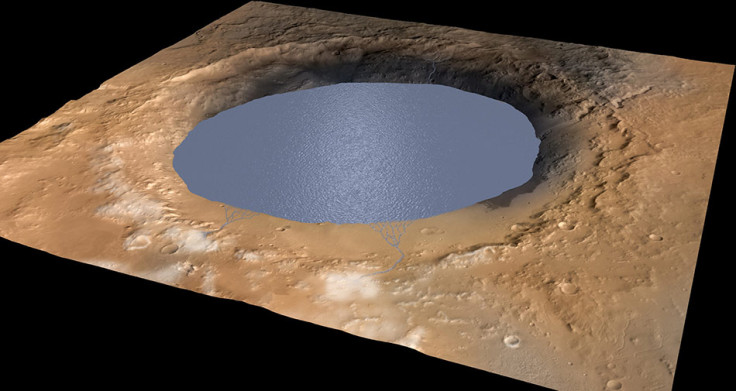Is there really water on Mars? New theory suggests those icy streaks may be sand
A team of scientists say what seems like water is just an optical illusion.
When NASA announced locating hydrated salts and intriguing dark icy streaks on Mars, they put a strong case for historical presence of water on Mars. But the agency has also said liquid water cannot exist on the surface of the red planet due to low atmospheric pressure, except at the lowest elevations for short periods.
A new study, now suggests that water's presence on Mars is doubtful and those icy streaks that NASA is referring to may just be sand.
In a paper published in the journal Nature Geoscience, a team of researchers, led by Frederic Schmidt of Paris-Sud University in France say the long and narrow features, known as recurring slope lineae (RSL), may be sand avalanches that are triggered by sunlight alone with changes related to shadowing. This indicates that sunlight alone can trigger landslides on RSL slopes, via a "thermal creep" effect, study team members said.
What is the new theory?
The earlier analysis of the streaks showed they changed in a way that appeared to resemble flowing water and these changes were seasonal. The strongest suggestion till date has been that of briny water once having flown on Mars.

But Schmidt and his team say the streaks have nothing to do with ice or water but are instead more of an optical illusion. These are similar according to them to sand avalanches one sees on a dune on a windy day, but here the flows are caused by sunlight and shadow.
"We thought that if it's purely dry, there should be no seasonal effects. But here we suggest that there's a dry process that is linked to [seasons]," says Schmidt.
How does it work?
According to Schmidt when the sunlight on Mars hits the sand, it raises the temperature of the top layer and leaves the below ones cool. This causes change in pressure on tiny pockets of gas surrounding the sand particles thus shifting the gas upwards. The mechanism bumps grains of sand and soil together, causing them to slip down the Martian slopes.

The other side
Though this theory and some others in the past have doubted the existence of water on Mars it's largely assumed till date that the two polar ice caps on the red planet appear to be made largely of water. On November 22, 2016, NASA further reported spotting a large amount of underground ice inthe Utopia Planitia region of Mars.
Further, scientists have also classified a definitive period, called Noachian period, of about 4.5 to 3.5 billion years ago when the formation of the oldest surfaces of Mars is believed to have taken place.
It is during this time that Tharsis bulge, a volcanic upland, is believed to have formed with extensive flooding by liquid water later in the same period. Specific minerals like hematite and goethite have also been spotted on Mars, both of which if not always, sometimes form in the presence of water.
Meanwhile, Schmidt and his team say more testing will have to be done, before their theory can be proved true.
© Copyright IBTimes 2025. All rights reserved.





















